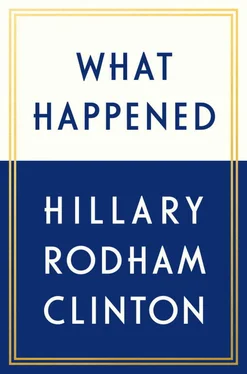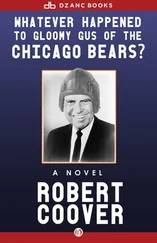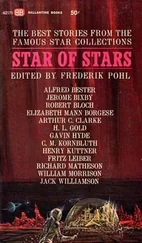I also wanted to build on the best parts of my 2008 effort, especially the fighting spirit of our campaigns in Ohio and Pennsylvania, where I succeeded in forming a bond with working-class voters who felt invisible in George W. Bush’s America. I had dedicated my victory in the Ohio primary to everyone “who’s ever been counted out but refused to be knocked out, for everyone who has stumbled but stood right back up, and for everyone who works hard and never gives up.” I wanted to bring that spirit to the 2016 campaign, along with the best lessons of Obama’s victories.
We sought to set the right tone with my announcement video. It showed a series of Americans talking excitedly about new challenges they were taking on: two brothers starting a small business, a mom getting her daughter ready for the first day of kindergarten, a college student applying for her first job, a couple getting married. Then I appeared briefly to say that I was running for President to help Americans get ahead and stay ahead, and that I was going to work hard to earn every vote. This campaign wasn’t going to be about me and my ambitions. It would be about you and yours.
There were other lessons to put into action. In 2008, the Obama campaign had been way ahead of us in using advanced data analytics to model the electorate, target voters, and test messages. It focused relentlessly on grassroots organizing and winning the delegates who would actually decide the nomination. It also built a “no drama” campaign organization that largely avoided damaging infighting and leaks.
John Podesta and I talked with President Obama and David Plouffe about how to construct a team that could replicate these successes. Plouffe was a big fan of Robby Mook, whom I ultimately chose as campaign manager. Robby had impressed David by helping me win against the odds—and against him—in Nevada, Ohio, and Indiana in 2008. In all three states, he put together aggressive field programs and competed hard for every vote. Then he went on to manage my friend Terry McAuliffe’s successful longshot campaign for Governor of Virginia. Robby was on a roll—young but, like Plouffe, highly disciplined and levelheaded, with a passion for data and a talent for organizing.
Huma Abedin, my trusted and valued advisor for years, would be campaign vice chair. President Obama praised his pollsters Joel Benenson and John Anzalone and focus group expert David Binder, so I hired all three, as well as a veteran of the Obama data analytics team, Elan Kriegel. Navin Nayak came on board to coordinate all these different elements of opinion research. Here’s how to keep it all straight: pollsters call up a random sample of people and ask their opinions about candidates and issues; focus groups gather a handful of people together in a room for an in-depth discussion that can last several hours; and data analytics teams make a lot of survey calls, crunch huge amounts of additional demographic, consumer, and polling data, and feed it all into complex models that try to predict how people will vote. These are all staples of modern campaigns.
To help guide messaging and create ads, I hired Jim Margolis, a respected Obama veteran, and Mandy Grunwald, who had been with me and Bill since our first national campaign in 1992. They worked with Oren Shur, my director of paid media, and several talented and creative ad agencies. I thought Jim’s and Mandy’s partnership would represent the best of both worlds. That’s what I was going for with all my hiring decisions: mix the best available talent from the Obama campaigns with top-notch pros I already knew. The latter category included Dennis Cheng, who had raised hundreds of millions of dollars for my 2006 Senate reelection campaign and 2008 presidential campaign, and later helped build up the Clinton Foundation endowment; Minyon Moore, one of the most experienced political operatives in Democratic politics and a veteran of my husband’s White House; and Jose Villarreal, a business leader who had worked with me at State and came on board to serve as my campaign treasurer.
As I built my team, I was focused on two tricky areas: how to strike the right balance with President Obama and his White House, and—drumroll for emphasis—how to improve my relationship with the press.
The challenge of striking a balance with President Obama wasn’t personal at all. After four years in his Cabinet, we liked and trusted each other. There aren’t many people in the world who know what it’s like to run for President or live in the White House, but we had that in common, and it gave us a special bond. When he finally passed health care reform, something I had fought for long and hard, I was overjoyed and gave him a big hug before a meeting in the White House Situation Room. After his rough first presidential debate with Mitt Romney in 2012, I tried to cheer him up with a photoshopped image of Big Bird strapped to Mitt’s family car. (Romney had promised to slash funding for PBS, and also famously took road trips with his dog on the roof of his car.)
“Please take a look at the image below, smile, and then keep that smile near at hand,” I told the President.
“We’ll get this done,” he replied. “Just hold the world together five more weeks for me.”
Now that we had switched places, and I was the candidate and he was the cheerleader, the challenge for me was navigating the tension between continuity and change. On the one hand, I believed deeply in what he had accomplished as President and desperately wanted to make sure a Republican wouldn’t be able to undo it all. We might have areas of disagreement, such as on Syria, trade, and how to deal with an aggressive Russia, but by and large, I would defend his record, try to build on his accomplishments, and listen to his advice. He would call from time to time and share his thoughts on the race. “Don’t try to be hip, you’re a grandma,” he’d tease. “Just be yourself and keep doing what you’re doing.” I was proud to have Barack’s support, and nearly every day told audiences around the country that he didn’t get the credit he deserved for putting our country back together after the worst financial crisis since the Great Depression.
At the same time, there were big problems that still needed fixing in America, and part of my job as candidate was to make it clear that I saw them and was ready to take them on. Inevitably, that meant pointing out areas where the Obama administration’s efforts had fallen short, even if the main culprit was Republican obstruction.
It was a fine line to walk, as it would have been for Vice President Biden or anyone who had served in the Obama administration. If I failed to strike the right balance, I ran the risk of either seeming disloyal or being cast as the candidate of the status quo, both of which would be damaging.
In one of the first meetings of our new team, in a conference room on the twenty-ninth floor of a Midtown Manhattan office building, Joel Benenson presented the results of his early opinion research. He said Americans had two main “pain points” that would likely shape their views of the election: economic pressure and political gridlock. The economy was definitely in better shape than it had been after the financial crisis, but incomes hadn’t begun to rise for most families, so people still felt like their progress was fragile and could be ripped away at any moment. And they had come to view dysfunction in Washington as a big part of the problem. They were right. I had seen that dysfunction firsthand and knew how hard it would be to break through it—although I think it’s fair to say I underestimated how my opponents would wrongly accuse me of being responsible for a broken system. I had a record of success working with Republicans over the years. I had plans for aggressive campaign finance reform, which would remove some of the profit motive behind the gridlock. And I believed we had a strong shot at making progress. The problem remained: how to find a compelling way to talk about the pain Americans felt and their dissatisfaction with how things were going in the country, without reinforcing Republican criticisms of the Obama administration, which would be self-defeating and just plain wrong.
Читать дальше












